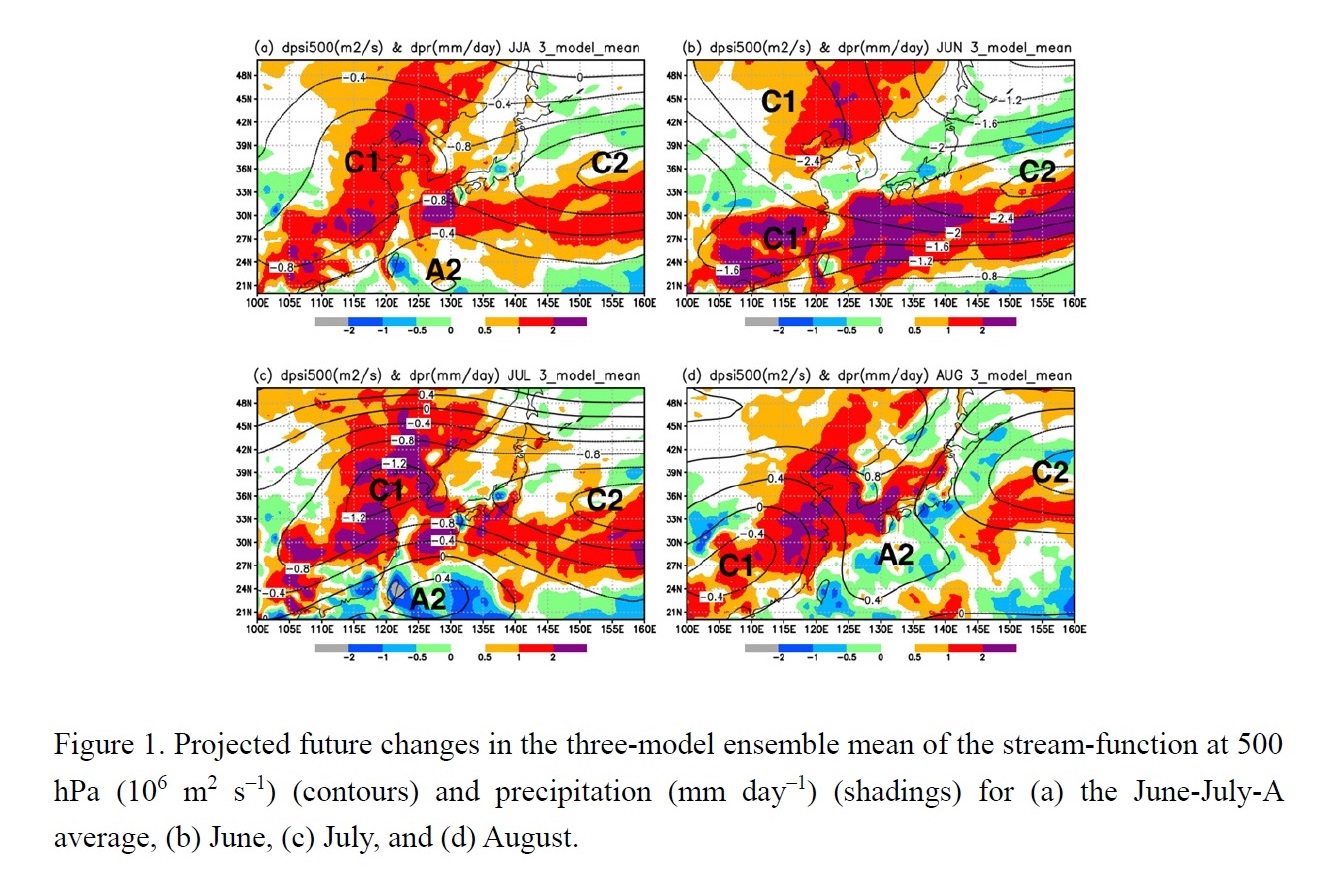Graphical Abstract
Ose, T., 2019: Characteristics of future changes in summertime East Asian monthly precipitation in MRI-AGCM global warming experiments. J. Meteor. Soc. Japan, 97, 317-335.
https://doi.org/10.2151/jmsj.2019-018
Graphical Abstract with highlights
JMSJ Editor's Highlight
Plain Language Summary: Global warming experiments using three different 60 km-mesh atmospheric global circulation models are studied to characterize future changes in monthly East Asian precipitation for June to August. Wetting and drying effects due to changes in mean vertical motion are related adiabatically to the projected modification of 500 hPa horizontal atmospheric circulation, which is characterized by two cyclonic circulation anomalies extending over the eastern Eurasian Continent (C1) and the western North Pacific Ocean (C2) for each month (Figure 1).
Highlights:
- Most regions of Japan lie within the northeasterly wind and associated downward motion zones of C2, leading to significant uncertainties in the future precipitation over Japan by the offset against the "wet-get-wetter" effect and possibly leading to even a future decrease in precipitation.
- A wetter future climate is anticipated under weak subsidence or the upward vertical motion zone of C1 and C2, such as western Japan in August and the Southwest Islands of Japan in June.







